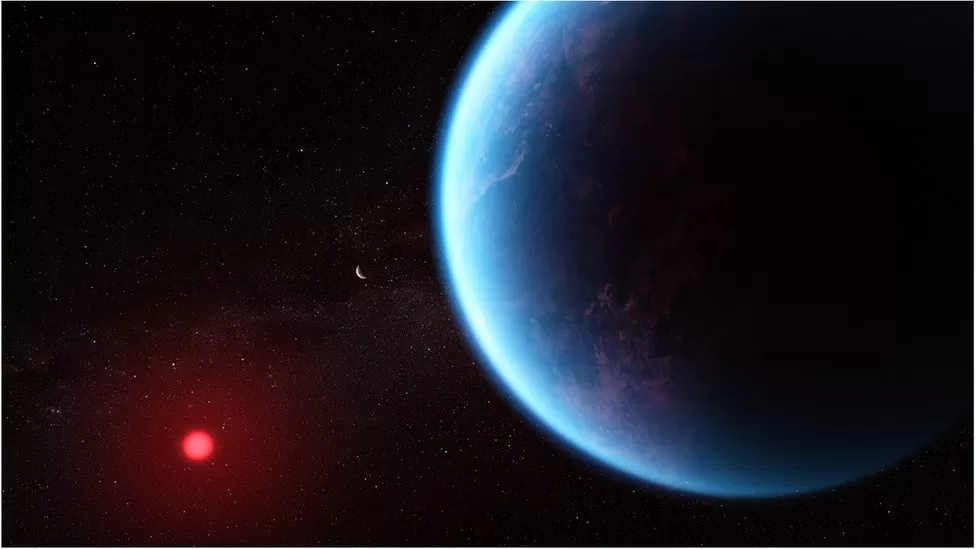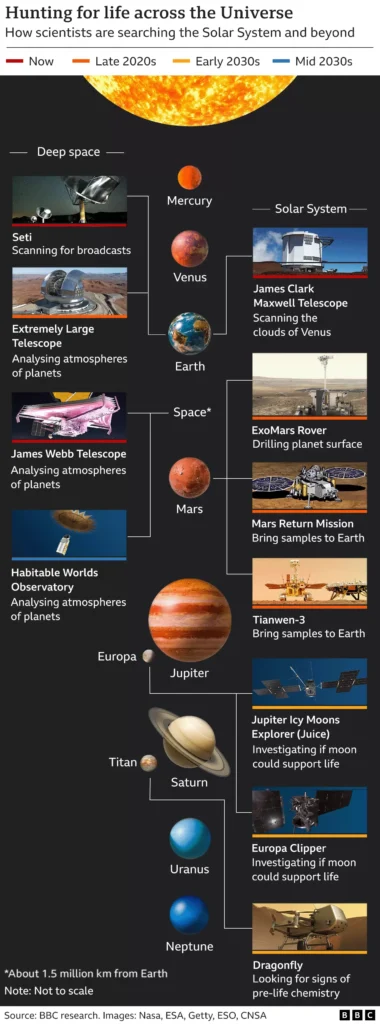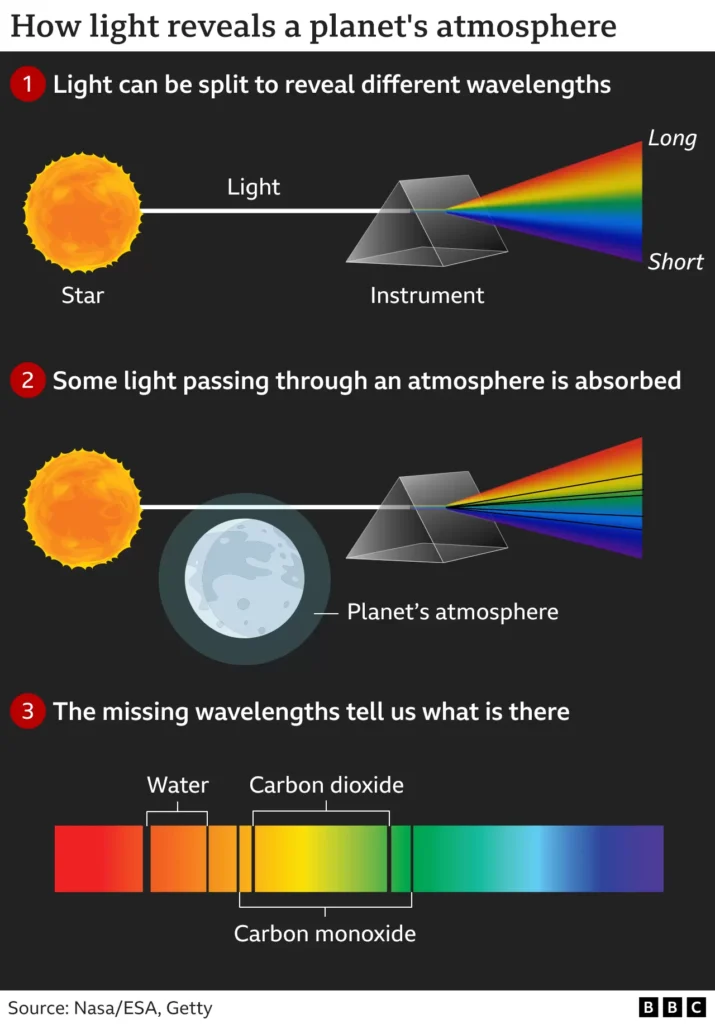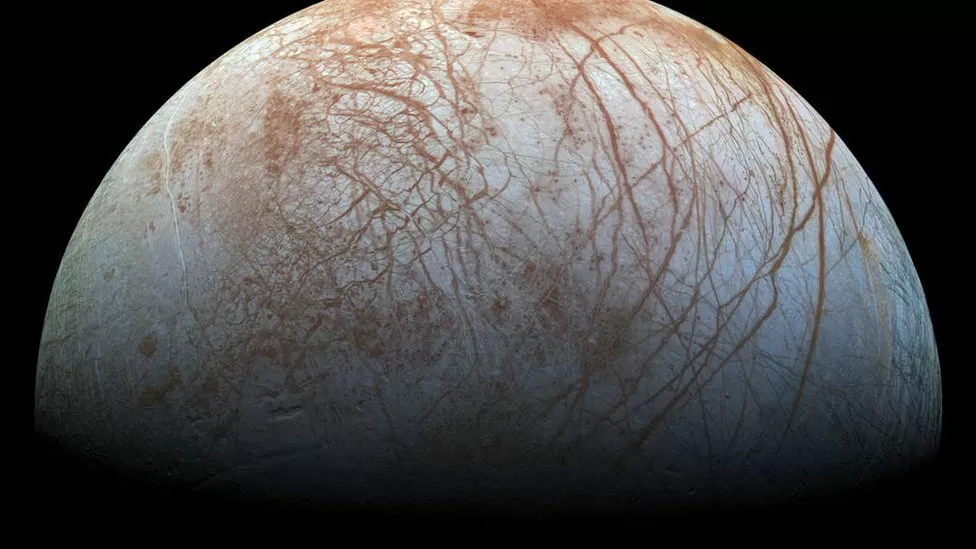For many astronomers, the question isn’t if there’s life beyond our planet, but rather when we’ll discover it.
The prevailing sentiment is one of optimism, with many believing that signs of extraterrestrial life could be identified within our lifetime, perhaps even in the coming years.
One scientist, at the helm of a mission to Jupiter, even posits that it would be unexpected not to find life on one of the planet’s frozen moons.
Recent observations from NASA’s James Webb Space Telescope (JWST) have hinted at potential life on an exoplanet, and the telescope has many more celestial bodies to examine.
A slew of ongoing and upcoming missions signify a renewed space exploration fervor, all vying for the monumental discovery of extraterrestrial life.
Prof. Catherine Heymans, the Astronomer Royal of Scotland, remarks, “Given the vastness of the Universe, with its countless stars and planets, many of us have always believed that it’s improbable for Earth to be the only habitat for intelligent life. Today, we possess the technological prowess to potentially answer the age-old question of our cosmic solitude.”
The ‘Just Right’ Region
Modern telescopes have the capability to study the atmospheres of exoplanets, searching for specific chemicals that, at least on Earth, are indicative of life.
A recent breakthrough came when potential traces of a gas, which on Earth is emitted by marine organisms, were identified in the atmosphere of a distant planet named K2-18b, located 120 light years away.
This planet resides in what’s termed the ‘Goldilocks zone’ by astronomers, signifying it’s at an optimal distance from its star, making conditions neither too hot nor too cold, but just right for the existence of liquid water, a crucial ingredient for life.

Within the next year, the team anticipates clarity on whether the intriguing indications they’ve observed are solidified or dissipate.
The study’s lead, Prof. Nikku Madhusudhan from the Institute of Astronomy at Cambridge University, expressed to me that a confirmation of these hints would “profoundly reshape our approach to the quest for life.”
He stated, “Discovering life signs on the very first planet we examine would suggest that life might be abundant across the cosmos.”
Prof. Madhusudhan forecasts that our comprehension of extraterrestrial life will undergo “a significant shift” in the next half-decade.
Even if K2-18b doesn’t yield signs of life, the team has another ten planets within the ‘Goldilocks zone’ lined up for examination, with the potential for more in the future. He believes that even a lack of findings would offer “valuable perspectives on the likelihood of life on such celestial bodies.”
His endeavor is merely one among a multitude of projects, both current and forthcoming, dedicated to the pursuit of life beyond Earth. While some focus on planets within our own Solar System, others venture into the vast expanse of outer space.

While NASA’s JWST boasts impressive capabilities, it does have its constraints. The Earth’s dimensions and its closeness to the Sun make it hospitable for life. However, the JWST might struggle to identify planets as diminutive as Earth in distant galaxies (given that K2-18b is eight times larger) or those in close proximity to their stars due to the overwhelming brightness.
To address this, NASA is developing the Habitable Worlds Observatory (HWO), set to launch in the 2030s. Equipped with an advanced sun-blocking mechanism, it reduces the luminosity from the star a planet revolves around. This allows it to identify and analyze the atmospheres of planets akin to Earth.
Additionally, the Extremely Large Telescope (ELT) is set to be operational later this decade. Positioned on Earth, it will gaze upon the pristine skies of the Chilean desert. With its unparalleled 39-meter diameter mirror, the largest ever constructed, it promises unprecedented clarity when examining planetary atmospheres compared to earlier instruments.
All these telescopic marvels employ a centuries-old method, traditionally used by chemists, to identify the chemical composition of materials based on the light they emit. Their advanced capabilities enable them to analyze the faint glimmer of light from a planet’s atmosphere, even if it’s situated hundreds of light years away.

Exploring Our Immediate Neighborhood
While many are casting their gaze towards far-off planets, some researchers are focusing closer to home, specifically within our Solar System.
Jupiter’s icy moon, Europa, stands out as a potential habitat for life. This captivating moon showcases surface cracks resembling tiger stripes. Beneath its icy exterior lies an ocean, from which jets of water vapor burst into space.
Both NASA’s Clipper and the European Space Agency’s (ESA) Jupiter Icy Moons Explorer (Juice) are set to reach Europa in the early 2030s.

Europa's tiger stripes are caused by cracks on its icy surface
Not long after the green light was given to the Juice mission in 2012, I posed a question to Prof. Michelle Dougherty, the mission’s lead scientist, about the possibility of discovering life. She responded, “Considering the icy moons of Jupiter, it would be quite unexpected if none of them harbored life.”
Additionally, NASA has initiated the Dragonfly mission, targeting Saturn’s moon, Titan. This intriguing moon boasts lakes and clouds composed of carbon-rich compounds, casting a mysterious orange glow over its surface. These compounds, combined with water, are believed to be vital for the existence of life.

A view of Titan taken by ESA’s Huygens lander as it descended to its surface
While Mars currently presents conditions unsuitable for life, many astrobiologists theorize that it was once a verdant planet with a dense atmosphere and oceans capable of sustaining life.
NASA’s Perseverance rover is actively gathering samples from a crater believed to have once been an ancient river delta. In the 2030s, another mission is set to transport these samples back to Earth for examination, potentially revealing microfossils of primitive life forms that have long since vanished.
Is there a possibility that extraterrestrial beings are attempting to communicate with us?
While some scientists dismiss this notion as mere science fiction, the quest to detect radio signals from alien worlds has persisted for years, notably by the Search for Extra Terrestrial Intelligence (Seti) institute.
Given the vastness of space, their explorations have been somewhat arbitrary. However, the capabilities of telescopes like JWST to pinpoint the most probable locations for extraterrestrial civilizations enable Seti to narrow its focus.
This refined approach has rejuvenated the institute’s efforts, says Dr. Nathalie Cabrol, head of Seti’s Carl Sagan Center for the Study of Life in the Universe. Seti has upgraded its telescope array and now employs tools designed to detect potential laser pulse communications from remote planets.
As an esteemed astrobiologist, Dr. Cabrol recognizes the skepticism surrounding Seti’s quest for a signal. However, she contends that while chemical traces from distant atmospheres, intriguing data from moon expeditions, or even potential microfossils from Mars can be debated, searching for a signal is the most definitive approach. “While it may seem the most improbable method to detect life signs, it would also be the most conclusive, and a discovery could be imminent,” she posits.
“Just consider the implications of intercepting a comprehensible signal,” Dr. Cabrol muses.
Three decades ago, the existence of planets around other stars was mere speculation. Today, over 5,000 such planets have been identified, offering researchers a detailed look.
Dr. Subhajit Sarker of Cardiff University, part of the team examining K2-18b, believes that the stage is set for a discovery that transcends a mere scientific milestone. “Discovering signs of life would not only redefine scientific paradigms but also profoundly alter humanity’s self-perception and our understanding of our position in the cosmos.”

